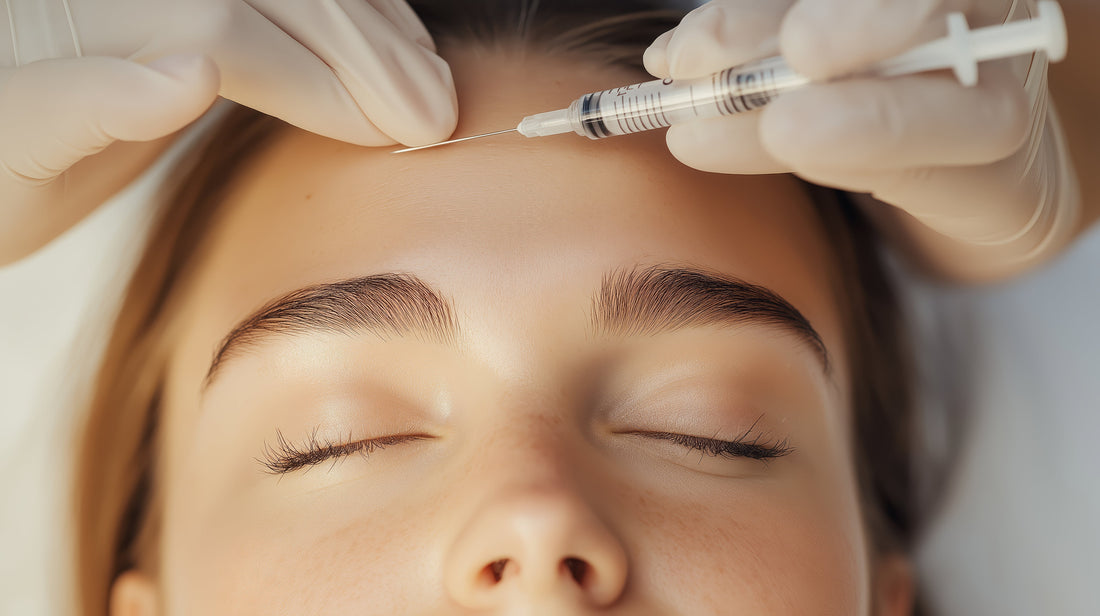
La science derrière le Botox et le Dysport : sont-ils vraiment différents ?
Partager
Dans le monde de la médecine esthétique, peu de termes suscitent autant d'intérêt, et de confusion, que Botox et Dysport. Ces noms reviennent sans cesse lors des consultations, sur les réseaux sociaux et dans les recommandations des patients, mais s'agit-il vraiment de la même chose ? Bien que beaucoup les utilisent indifféremment, il existe en réalité des différences importantes qui peuvent influencer les résultats du traitement.
Dans cet article de Curage Med, nous allons décortiquer les mécanismes scientifiques du Botox et du Dysport pour vous aider à comprendre leurs différences et à faire un choix éclairé en fonction de vos objectifs esthétiques.
Que sont le Botox et le Dysport ?
Botox et Dysport sont deux marques commerciales de la toxine botulique de type A, une neurotoxine purifiée utilisée pour détendre temporairement les muscles responsables des rides d'expression (celles qui se forment lors des expressions faciales). Cette toxine agit en bloquant la libération d'acétylcholine, le neurotransmetteur qui déclenche la contraction musculaire.
Le Botox est fabriqué par Allergan et le Dysport par Ipsen. Ces deux produits sont approuvés par des organismes de réglementation internationaux comme la FDA (États-Unis) et la Cofepris (Mexique) pour un usage esthétique et thérapeutique.
Composition et formulation : pas exactement les mêmes
Bien que les deux produits contiennent de la toxine botulique de type A comme ingrédient actif, leurs formulations diffèrent sur des points essentiels :
- Les unités ne sont pas équivalentes : une unité de Botox ne correspond pas à une unité de Dysport. En général, il faut environ 2,5 à 3 unités de Dysport pour obtenir le même effet qu’une unité de Botox.
- Poids moléculaire et protéines associées : le Botox et le Dysport contiennent différentes protéines complexantes, qui influencent leur diffusion dans les tissus et la façon dont le corps peut y réagir au fil du temps.
- Diffusion dans les tissus : Dysport a tendance à se diffuser plus largement, ce qui peut être avantageux pour traiter de grandes zones comme le front, mais moins idéal lorsqu’une application précise est nécessaire, par exemple entre les sourcils.
Début et durée des effets
Un autre point de comparaison clé est la rapidité avec laquelle ils commencent à agir et la durée de leurs effets :
- Dysport : tend à montrer des résultats visibles en 2 à 3 jours.
- Botox : les effets prennent généralement un peu plus de temps, apparaissant entre le 3e et le 5e jour.
Les deux traitements durent généralement de 3 à 4 mois, bien que cela puisse varier en fonction du métabolisme du patient, de la dose utilisée et de la technique d'injection.
Diffusion ou précision : laquelle convient le mieux à chaque domaine ?
La diffusion plus large du Dysport en fait un bon choix pour les zones étendues comme le front. Le Botox, quant à lui, est plus précis et idéal pour des zones plus petites et ciblées comme les pattes d'oie ou les rides du lion.
La décision peut également dépendre de facteurs tels que la force musculaire, l'épaisseur de la peau et le résultat esthétique souhaité (plus doux ou plus défini).
Lequel est le meilleur ? Cela dépend de vous.
Il n'existe pas de solution universelle. Les deux produits sont sûrs et efficaces lorsqu'ils sont administrés par un professionnel qualifié. L'essentiel est une évaluation médicale personnalisée, car chaque visage a des besoins spécifiques.
Certains patients ont même essayé les deux produits à différents moments et ont préféré l'un à l'autre en fonction de la réaction de leur corps, de la rapidité d'apparition des résultats ou de l'aspect général obtenu.
Votre traitement, votre choix, notre expertise
Chez Curage Med, nous sommes convaincus que des patients bien informés prennent des décisions éclairées. C'est pourquoi notre équipe médicale prend le temps de vous expliquer vos options et de vous recommander la solution la mieux adaptée à votre visage, à vos objectifs et à votre mode de vie.
Si vous envisagez des injections de Botox ou de Dysport, nous vous invitons à visiter Curage Med. Vous y bénéficierez de soins personnalisés, de produits originaux et de résultats qui sublimeront votre beauté naturelle.
Réservez votre consultation avec nous et faites le premier pas vers une version plus fraîche et plus confiante de vous-même.
